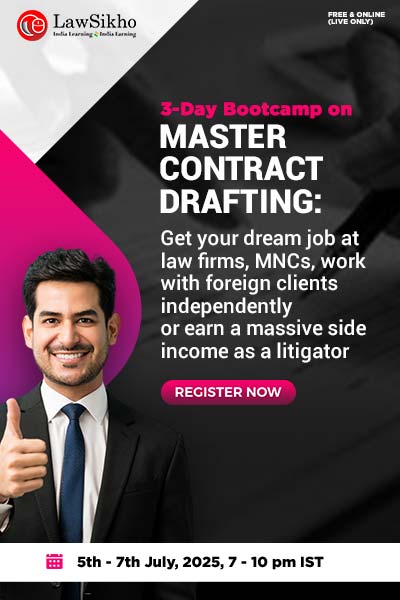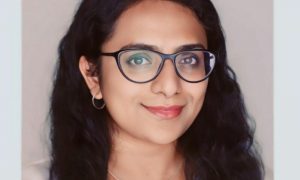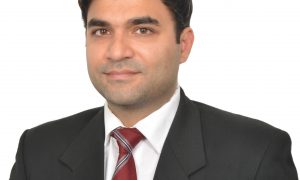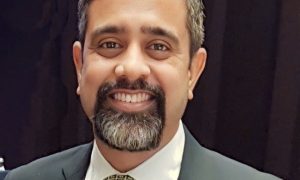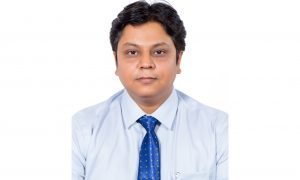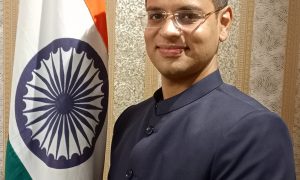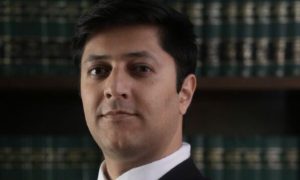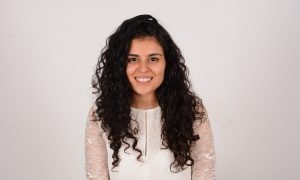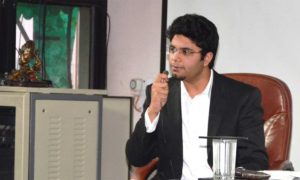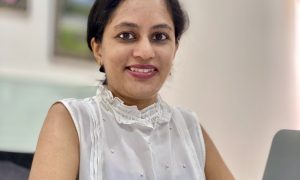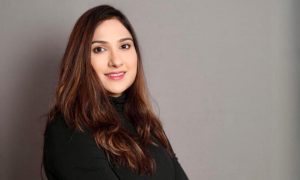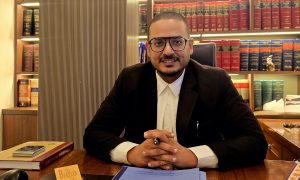This interview has been published by Namrata Singh and The SuperLawyer Team
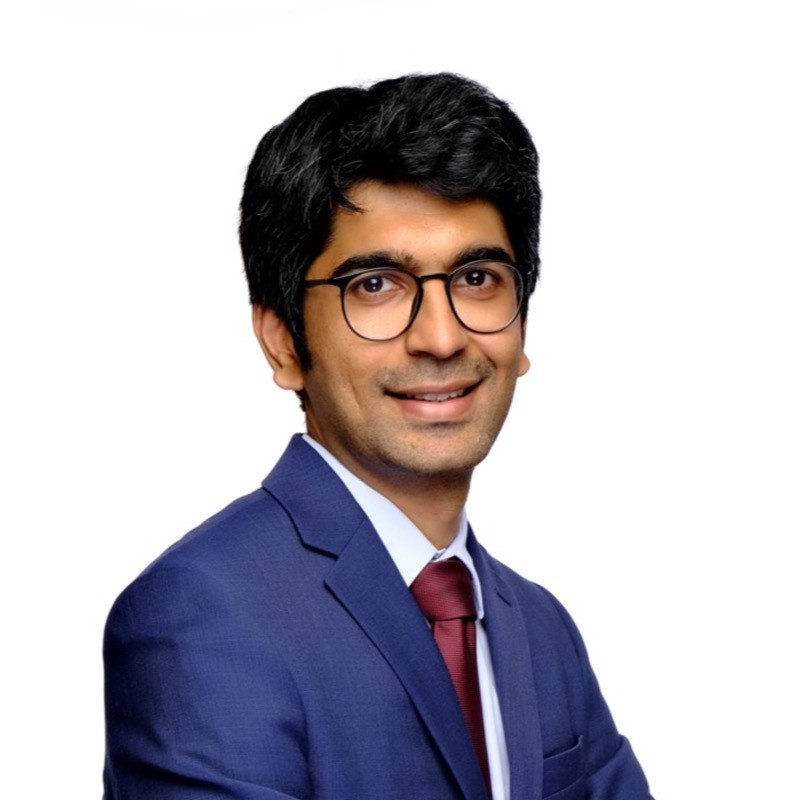
Reflecting on the early stages of your career, can you share your experiences or challenges you faced during your internships and the process of securing your first job in the legal field? How did these early experiences shape your professional outlook and contribute to your growth as a technology and M&A lawyer?
Like many others I know, I ended up pursuing law through a process of selection by elimination. Truth be told, as a student, I was tuned out of the law for extended periods. The resulting impostor syndrome would catapult me into working egregiously hard during my internships. I managed to secure offers from both the law firms that I did my corporate law internships at. I wanted to start my career in Mumbai. I learnt many things from my eventual first boss, Sawant Singh: the virtues of simplicity in drafting, negotiating without needless animosity, and, most of all, not letting those deadlines erode your joie de vivre.
Given your journey from co-founding a legal-tech outfit to your current role as a Partner at SAM, how have your early experiences shaped your approach to technology law and M&A, and what inspired you to bridge the worlds of law and technology? Additionally, as you oversee digital transformation at SAM, could you elaborate on the key areas you are focusing on?
As corporate lawyers, we have been technological laggards for decades. We use software that is clunky, we burn midnight oil doing mundane and repetitive tasks, and there is very little standardisation in how one goes about drafting and reviewing. But this is changing; especially because clients are increasingly valuing firms that leverage technology well. My experience at the legal-tech outfit I co-founded helped me understand how law and code can interact and what kind of problems can be solved through this interaction. The experience of having been a part of a team that built a SaaS offering from scratch has been hugely valuable in understanding what goes into building and maintaining software and applications.
I follow classic design principles whenever I approach digital transformation. First, identifying a time-consuming, low-paying workflow. Second, figuring out the data and processes that go into that workflow. Third, building an automation model to minimise human effort in executing the predictable or repetitious parts of that workflow. Finally, refining the automation model based on feedback gathered from other users and my own testing while wearing my lawyer hat. Clients usually turn to SAM for very structured, confidential, and bespoke needs. At this end of the legal services spectrum, digital transformation is a layered and complex undertaking which should prioritise confidentiality and security as much as speed and efficiency. But, in essence, my endeavour is to find ways to increase the proportion of creative work that we as lawyers do and reduce the proportion of mundane work, with the help of technology.
As a music enthusiast and a Hindustani classical flutist, how do you find parallels between your passion for music and your legal profession? Do these two aspects of your life influence each other in any way?
When I started learning music at the late age of 25, I felt, while I had some natural strengths as a lawyer, I had absolutely none as a student of music barring a preposterous desire to learn it at any cost. So, initially, learning music felt like a fool’s errand. A decade into it, I feel I could not have done myself a bigger favour. There has been a cross-pollination of learnings that I have had from these twin pursuits. I have learnt to enjoy the rough-and-tumble of everyday practice and process rather than being too caught up with outcomes. I rely more on passion for what I do now than on discipline.
Most importantly, music and art deepen a practitioner’s feel for detail and sense for nuance, which allow one to derive a sense of fulfilment from doing little things well.
Being deeply involved in digital transformation initiatives at SAM, how do you foresee technology changing the landscape of legal practice in the coming years, especially in reducing the volume of standardized work?
If voices of dead singers can be recreated using AI as well as we have seen lately, it should be relatively straightforward to let AI track your work and activity as a lawyer continuously over a period, and build an AI assistant that drafts like you, does research like you, crafts arguments like you, uses vocabulary and precedents that you tend to use with a decently high accuracy rate.
Technology will slowly but surely transform legal practice radically. When I started my career, the norm was exhaustive 500+ page DD reports. Now, many more clients are willing to consider issue-based reports even in strategic M&A deals. I foresee a future in which there are several alternative-legal-service offerings for compliance, drafting, negotiation, and review to aid lawyers at law firms as well as client organisations. Firms that invest in technology and structured datasets now, will be in a different league 4-5 years down the line, as compared to those that do not.
Your advisory work spans fintech, data protection, cybersecurity, AI, blockchain, e-commerce. Can you share a project or experience that particularly stood out to you in these domains and presented unique challenges or opportunities?
Almost all the work that we do has interesting dimensions. Structuring FLDG for revolving credit arrangements, advising on the grey areas in the current version of the DPDP Act, negotiating cyber-security insurance, advising on web-scraping issues connected with AI, assisting pro bono the victim of a crypto-phishing attack launched by an international gang of crypto-drainers, are a few things we have done in the last 2-3 months that presented unique challenges. Recently, when advising a client, we were compelled to analyse whether technological ‘control’ of an e-commerce platform, when coupled with a few other factors, can lead to the imputation that such entity carried out the business of e-commerce. Got me thinking about the fundamental need for us to rethink certain core concepts of corporate law like ‘control’.
How was your experience working at Lakshmikumaran & Sridharan Attorneys, which you joined during the pandemic?
I joined L&S in the thick of the first wave of the pandemic and remotely hired my entire team and could not meet any of them in person for a year and a half. This would not have been possible without the trust posed in me by Badri at L&S and an incredibly supportive team. I found the culture at L&S to be very collegial and can only see the firm going from strength to strength.
Can you shed some light on the working culture at Shardul Amarchand Mangaldas & Co? How does the culture at SAM&Co impact your approach to leadership and collaboration within your teams?
SAM is a high-octane workplace with marquee clients and deals to keep the most ambitious of lawyers thoroughly engaged. In a turbocharged work environment, it is important to have a vision of what you want to do and who you want to be. I keep asking myself and folks in the team, “Are you making strides towards realising your potential?” That sense of forward momentum is crucial for everyone. As for collaboration, the most important rule in our team is around the expression of dissent: anyone can disagree freely and frankly with anyone else in the team as long as they do so responsibly. Transparency, communication, and accountability have served us well.
How do you see the intersection of law and entrepreneurship evolving, and what advice would you give to aspiring legal professionals?
The legal profession has always been an entrepreneurial undertaking. But there is now scope for hyper-specialisation. As long as your foundational skill sets and knowledge are in place, you can specialise in niches that did not exist until very recently. You can choose to be a Web 3.0 lawyer, or a distressed M&A lawyer, or a Music Industry lawyer. At the same time, technologies like AI, blockchain, IoT have created intersectional spaces for techno-legal entrepreneurs that hitherto never existed. The important thing is to channel one’s entrepreneurial energies meaningfully and methodically over a long enough period to solve hard problems.
Whether you are a lawyer, an entrepreneur, or an artist, I feel it is important to be able to see your work as an expression of yourself. It is what you do for most part of your waking hours. If you are a legal professional, how you draft a clause, how you analyse a regulation, how you negotiate, how you format a document, how you punctuate your sentences – they reveal things about who you are.
As someone who practices various forms of meditation, how do you think mindfulness and meditation contribute to your professional life, especially in navigating complex legal matters?
Drafting and research require long spans of attention and focus. Meditation has helped me improve the control I have over my attention. It has also helped me improve my ability to remain equanimous, reduce blind spots in my perspective, and be able to think from the standpoint of a diverse set of people: regulators, clients, opposing counsel. At the Vipassana camp, I learnt a meditation technique called ‘metta bhavana’, which involves directing compassion and kindness towards oneself and everyone else, especially towards folks who may have caused you grief. This type of meditation can be very transformative in a profession where one is frequently involved in contentious situations.
Given your extensive experience in the legal and technology domains, what suggestions would you offer to the current generation of aspiring lawyers and technology enthusiasts? How can they proactively enhance their knowledge and gain valuable experiences to thrive in the future landscape of law and technology?
This phase of technological evolution will have a profound impact on how our laws are conceptualised. Just see the wrenches thrown by crypto into securities law or AI into intellectual property law. To tackle questions thrown up by this intersection, we need a new generation of lawyers who can abstract and understand concepts of technology well enough to create legal frameworks around them even if they cannot write code.
On a separate note, it is also important to be alert to the pitfalls of technology. For example, a lot of internet-based applications that we use today are based on the ‘Hook Model’, a framework for designing addictive applications that maximise high-frequency user engagement using the trigger-action-reward-investment quartet. Reckless use of such apps can mess with one’s dopamine reward system, fragment attention span, and rewire the brain for instant feedback loops. In the coming years, AI-based profiling will increase the addictive quotient of such apps further. So, it is more critical than ever when using technology to be aware of how one is allocating their energy, time, and attention. Think long-term even if incentives are stacked in a way that discourages it. Some – if not all – things are best done the hard way, by getting dirt in your fingernails. F. Scott Fitzgerald said it best when he said, “Nothing any good isn’t hard.”
Get in touch with Hemant Krishna-

